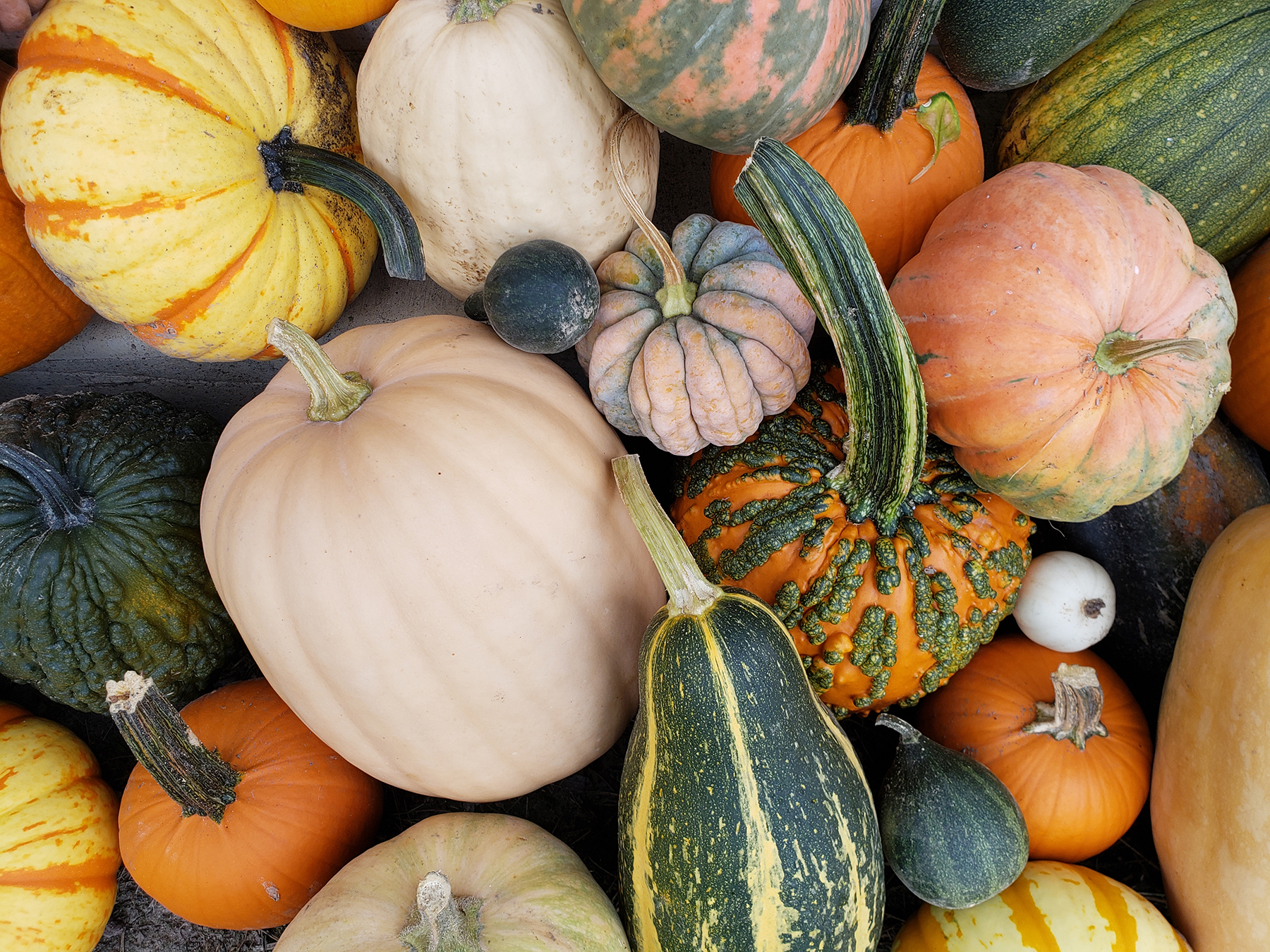Pumpkin ushers in fall decorations, foods

STE. GENEVIEVE, Mo. – It is pumpkin time, when people celebrate the versatile vegetable that marks seasons, holidays and traditions.
This member of the squash family has been grown in North America for thousands of years, says University of Missouri Extension horticulturist Katie Kammler.
Some pumpkins are kitchen workhorses, lending color, fiber and flavor to desserts, soups and other dishes. But consumer demand drives many plant breeders to focus on ornamental appeal rather than table quality, says MU Extension horticulturist David Trinklein. Modern pumpkins mature into a deep orange color much earlier, and most varieties now bear a large stem that serves as a convenient handle. Another new development is pumpkins with rinds covered with warts, which can make ghoulish jack-o’-lanterns.
When selecting a pumpkin for decoration, use the “thumbnail test” to make sure it’s fully mature, says Trinklein. If you can pierce the rind with your thumbnail, the pumpkin will not store well.
Pumpkin pie remains its namesake’s most popular culinary use. Whether scooped from the tan shell or spooned out of a can, the bright orange flesh comes from the species Cucurbita moschata. Butternut squash, Long Island Cheese and Buckskin are common varieties in this species. If buying a pumpkin for making pies, choose a tan-colored pumpkin with a small, hard stem.
Other varieties known for their flavor are in the Cucurbita maxima species. Galeux d’Eysines, or peanut pumpkin, is pink with bumpy skin. Jarrahdale is a flat, blue-green pumpkin with heavy ribs and thick flesh. Pink Banana pumpkins grow up to 40 pounds and have a pink skin and an elongated shape. One Too Many has red streaks on a white background.
Cushaw is Kammler’s personal favorite for pie making. This oblong pumpkin has a bulbous bottom and comes in white, green and white, yellow, green and white.
Cucurbita pepo, another commonly grown species, includes most of the jack-o’-lantern pumpkins, gourds and more ornamental varieties. Other edible varieties include Delicata squash, which is yellow with green stripes and is cooked like summer squash, and Winter Luxury, a small jack-o’-lantern type with netted skin. It also includes summer squash and varieties with hull-less seeds.
Kammler and Trinklein offer some pumpkin trivia:
- Morton, Ill., the self-proclaimed “Pumpkin Capital of the World,” hosts an annual Punkin Chuckin’ Contest in which competitors use elaborate mechanical devices to lob pumpkins across great distances.
- According to Guinness World Records, the heaviest pumpkin ever grown weighed 2,624 pounds, more than some subcompact cars. Mathias Willemijns of Belgium grew the gargantuan gourd in 2016.
- Guinness World Records gives the title of largest pumpkin pie to a confection made in 2010 at the New Bremen Pumpkinfest in Ohio. The pie weighed 3,699 pounds and measured 20 feet in diameter.
- At the first Thanksgiving in 1621, the Pilgrims probably did not serve pumpkin pie. Instead, they made pumpkin stew. One way American colonists prepared pumpkins was to remove the seeds, fill the inside with milk, spices and honey, and bake the pumpkin in hot ashes.
- https://extension.missouri.edu/media/wysiwyg/Extensiondata/NewsAdmin/Photos/2022/20220926-pumpkins-2.jpg
- Pumpkins come in varying colors, shapes, textures and sizes, all signs of fall’s arrival. Photos courtesy of MU Extension horticulturist Katie Kammler.
Miss Clipping Out Stories to Save for Later?
Click the Purchase Story button below to order a print of this story. We will print it for you on matte photo paper to keep forever.

